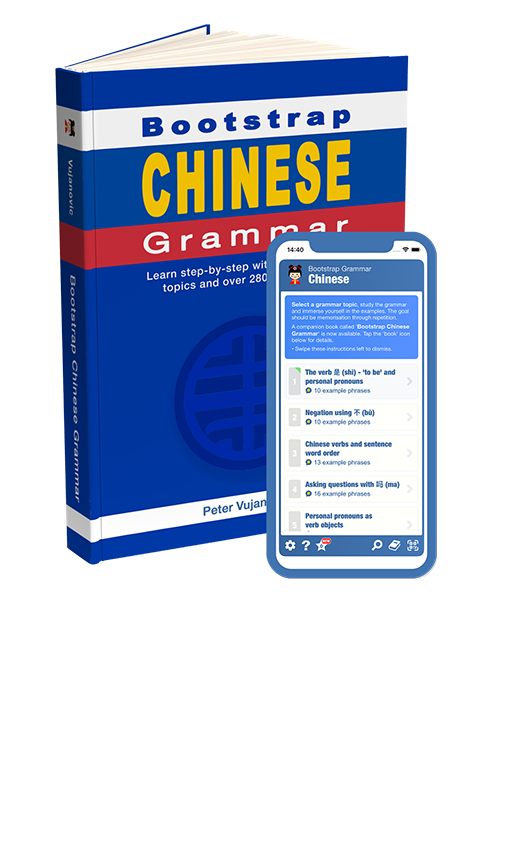Chinese grammar - Stand-Alone Demonstrative pronouns - 'this one' or 'these ones' |
|||
|
|||
Demonstrative pronouns take the place of a subject or object without referring explicitly to it. In English we say 'this one' or 'these ones' etc. In Chinese the demonstrative adjectives are used to express this: • 'this one' is 这个 (zhè/ge) and 'that one' is 那个 (nà ge). — If the object is known then a matching counter could be used in place of the general counter 个 ( ge). — To specify a precise number we insert the number before the counter. • 'these ones' is 这些 (这些) and 'those ones' is 那些 (nà xiē). — No counter is used for a plural demonstrative pronoun. |
| Examples: | |
|
那棵树很大。这个很小。
nà kē shù hěn dà.#zhè ge hěn xiǎo. That tree is big. This one is small. |
|
|
这个问题很难。这个很容易。
zhè ge wèntí hěn nán.#zhè ge hěn róngyì. This question is difficult. This one is easy. |
|
|
这些书很贵。这些很便宜。
zhèxiē shū hěn guì.#zhèxiē hěn piányi. These books are expensive. These ones are cheap. |
|
|
这个太大。那个也大。
zhè ge tài dà.#nà ge yě dà. This one is too big. That one is also big.
|
|
|
这两个很大。那三个也很大。
zhè liǎng ge hěn dà.#nà sān ge yé hěn dà. These two are big. Those three are also big. |
|
|
这个很漂亮。那两个很丑。
zhè ge hěn piàoliang.#nà liǎng ge hén chǒu. This one is beautiful. Those two are ugly.
|
|
|
这三个苹果很小。这三个很大。
zhè sān ge píngguǒ hén xiǎo.#zhè sān ge hěn dà. These three apples are small. These three are big. |
|
|
那四个人是中国人。那两个是印度人。
nà sì ge rén shì zhōngguó rén.#nà liǎng ge shì yìndùrén. Those four people are Chinese. Those two are Indian.
|
|
|
那些娃娃很丑。这些很可爱。
nàxiē wáwa hěn chǒu.#zhèxiē hén kě'ài. Those dolls are ugly. These are cute.
|
|
|
那个房间有一张桌子。那个没有桌子。
nà ge fángjiān yǒu yì zhāng zhuōzi.#nà ge méi yǒu zhuōzi. That room has a table. That one does not have a table. |
|
|
那棵树很大。这棵很小。
nà kē shù hěn dà.#zhè kē hěn xiǎo. That tree is big. This one is small.
|
|
|
这辆车很快。那辆很慢。
zhè liàng chē hěn kuài.#nà liàng hěn màn. This car is fast. That one is slow.
|
|
 |
|




